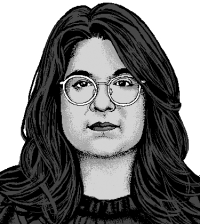Communion at the border wall in Tijuana
What does it mean to worship in the middle of a wound?

There’s a spot at the edge of the continent where a wall plunges into the Pacific Ocean. The border wall between San Diego and Tijuana extends a good 50 feet out, far enough that you can see that if you tried to walk to its end, you’d end up past your depth. This portion of the wall has been there since the 1980s. If you drive east along it, farther into Tijuana proper, you’ll start seeing portions of the wall that have only been there since October and are already beginning to rust in the sea air. This place where the border wall falls into the sea feels like the height of human folly—a literal line in the sand that’s been defended to the death, the starting point of an empire.
I’m here at the wall, on the Tijuana side of the beach, at 1 p.m. on a Sunday. I walk up to it and think about stepping into the ocean, the waves up to my ankles, to rest my hands on the paint-clotted steel. There’s a low mist hanging over the water, and just now the sun is beginning to cut into it. I’m in Tijuana because I’ve seen news reports about tear gas, people sleeping in tents, and parents being separated from their children. I’m here to help do something, but just what that is seems unclear to me.
This afternoon, though, I’m here for church. With the other volunteers, I climb up the beach to Friendship Park, past where deported veterans have painted their names on the wall next to murals and Bible verses, past food vendors and blaring boomboxes and dogs on walks.
In a lot of ways, it’s an ordinary ecumenical church service. There are prayers, announcements, and a young guy with a guitar leading songs. In other ways, it isn’t just another service. We’re outside, where the wind whips everyone’s hair and carries the sound out over the Pacific. And looming over us is the wall, some 20 feet tall. Through its slats and razor wire, we can see another group of people. Across the expanse of sandy no-man’s land, we can hear another sermon, this one in English. On our side, we sing Spanish versions of the hymns I know from childhood, staring at a cross painted on the wall and a tableclothed card table set with bread and wine.
While church services sometimes feel to me like uneasy compromises between the human and the divine, the beauty of the eucharist feels uncomplicated. In sanctifying the regular, life-sustaining ritual of a meal, we call attention to a God who is present not only in this bread and this wine, at this gathering, but also everywhere in a world that’s bright and buzzing with grace. Now, though, I wonder: What does it mean to call God down to a border wall, to worship in the middle of a wound?
I arrived in Tijuana earlier in the week, crossing the Chaparral footbridge with other volunteers every morning as the sun rose. I spent those days being with people as they waited to cross. I watched them as they learned about the rights we couldn’t guarantee they’d get when they crossed the border, as they discovered that spouses would be separated and at least one parent would be separated from their children, as they navigated the complex calculus of a thousand unknowns. After that Sunday service I would spend another several days there, this time in pouring rain under an overpass, handing out garbage bags to keep suitcases and documents and children dry.
As we prepared people to cross over, we listened to them talk about “el otro lado” with burning intensity, even as they could only give vague answers about what it would look like and feel like, what they would do when they got there, and what would happen next. We prayed over people, blessing their journeys. I helped translate the prayers of clergy from English to Spanish: “Que Dios les bendiga.” We gathered to see off vanloads of people about to present themselves for asylum. We offered a few small comforts before they left—but all with the forced cheerfulness of a wake that's trying to be a party. Our language was that of crossing a border, but it was also the language of death.
That Sunday though, walking up to the border wall to receive communion, I felt like I was pinned to the center of everything. Between Mexico and the United States, between land and sea, between hard days and harder ones. Taking bread and wine in the shadow of the wall didn’t resolve anything for me or make my faith any stronger. The grief and anger that I brought with me into the service only got heavier. The eucharist is a potent symbol of suffering turned into salvation, of the holiness of bodies, and of the strength of communities. But that afternoon, the reminder that God is present in our physical reality seemed cruel rather than hopeful.
Annie Dillard writes that “there is no less holiness at this time—as you are reading this—than there was on the day the Red Sea parted.” But as the waves keep lapping up against the shore and the wall, people keep getting loaded into vans and taken into detention centers for wanting to be safe. They keep being fed into a system designed to humiliate and dehumanize them. We are not at the shores of the Red Sea, and this wall is stronger than Jericho’s. It feels like all that’s left here is the slow work of time and the waves, mechanical and unstoppable.






